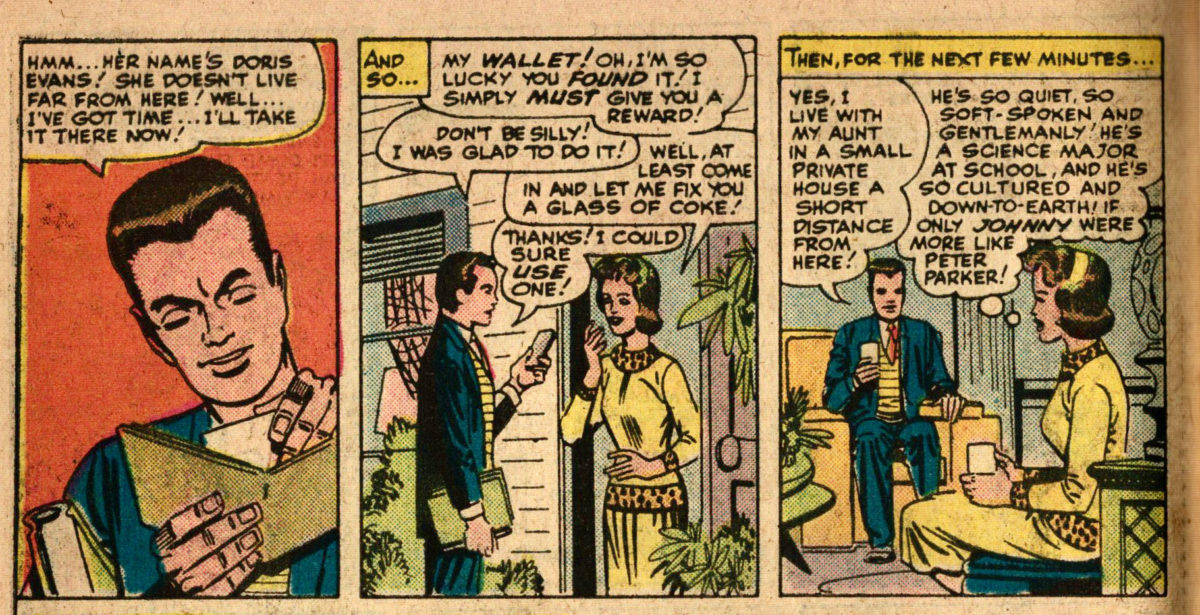Featuring: Human Torch and Thing
Release: September 8, 1964
Cover: December 1964
12 cents
Written by the Overlord of Originality… Stan Lee
Illustrated by the Archduke of Action… Dick Ayers
Inked by the High Priest of Highlights… Paul Reinman
Lettered by the Lama of Lexicography… Art Simek
12 pages
| Previous | #262 | Next |
|---|---|---|
| Strange Tales #126, Story B | Reading order | Strange Tales #127, Story B |
| Strange Tales #126, Story B | Strange Tales | Strange Tales #127, Story B |
Recall from Strange Tales #126 that Dr. Strange was about to battle the Dread Dormammu. And Human Torch and Thing had just defeated Puppet Master for the 7th time or so. Let’s follow up on Human Torch and Thing first. After all, they get most of the cover space, while one of Marvel’s single greatest stories ever is fit into a tiny little box on the cover.
This story is titled, “The Mystery Villain!” Mystery villains always give me a crisis of conscience. The format I use for these posts necessarily spoils such things. And I wouldn’t want to take away the joy of reading this “excellent” Human Torch adventure fresh.

Maybe this time, if I’m careful, I can avoid explicitly revealing the identity of the mystery villain. Mind you, I can’t actually avoid revealing the identity of the mystery villain (given that I want to stick to my standard format), but I can leave it a little bit subtle, make you have to think if you want the spoiler.
Continue reading “Strange Tales #127”






























